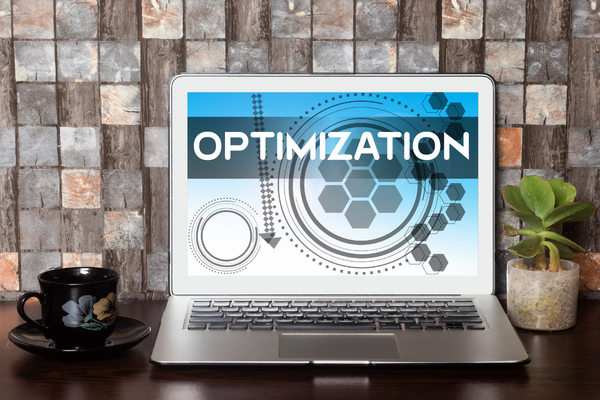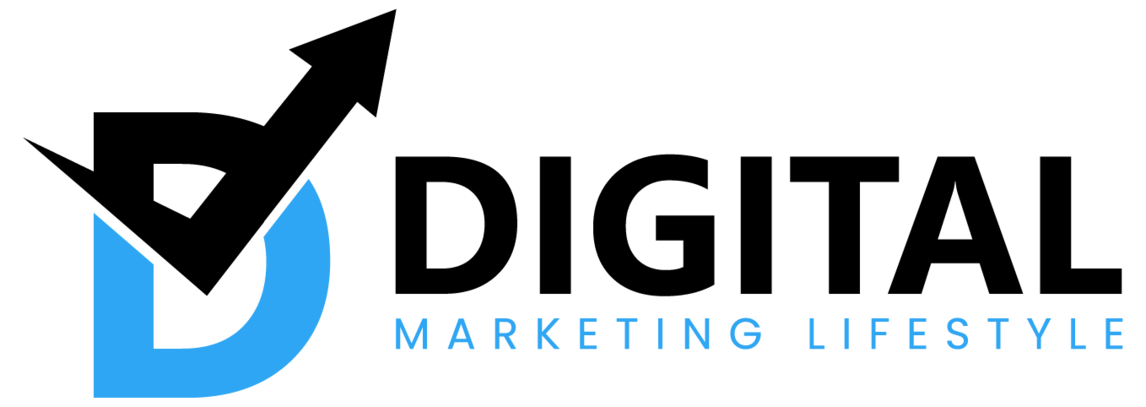How To Get Started With Conversion Rate Optimization (CRO)
How To Get Started With Conversion Rate Optimization

There are more than 1.1 million websites on the internet, spread across more than 271,000,000 unique domains. It's an incredible number of pages competing to get a limited amount of traffic, views, clicks, and other benefits. You're probably getting your fair amount of them. Congratulations! It's not enough to just get people to your website, especially if you own any business. Once they land on your site, it is essential that you convert them. You must do this efficiently and effectively.
A conversion rate optimization (CRO), strategy is one way to do this. You'll improve the quality of your leads and increase revenue. This will lower your customer acquisition cost, and will allow you to grow and scale your business.
This article will explore the importance of CRO and discuss some tips for maximizing your conversion rate.
1. What is conversion rate optimization?
2. Examples Of Conversions
3. Conversion Rate Optimization: Key Benefits How to Calculate Conversion Ratio
4. What is considered a "good conversion rate"?
5. What Is the CRO Process?
6. The components of a successful CRO
7. How to Measure Conversion Ratio
8. Uncommon CRO Strategies
9. How to Increase Your Conversion rate
What is Conversion rate Optimization?
Conversion rate Optimization is the systematic increase in the number of users or visitors that take a specific action via your website, social networks, or other online marketing channels. Understanding your users is key to improving your conversion rate. It is important to know how users interact with your site, navigate it, and then take action.
Examples of Conversions
Completing a form. Signing up for the newsletter. Adding a product in their shopping basket. Clicking on a hyperlink. Downloading a piece. A conversion is when a customer becomes a regular customer. Converting an occasional customer into a regular customer is simply any action that users take that results in your collecting their information, making sales, or other insights into how they interact.
You might think that conversion rate optimization is a key part of digital marketing. But what does it have to do SEO? Both for SEO professionals and businesses they work for, there is a lot. CRO can bring you many benefits. Increased engagement metrics can provide valuable insights about the performance of your campaigns, and what encourages users to act. A higher ROI CRO will result in higher conversion rates. This means you're getting more value for your marketing dollar.
You can land more customers without needing to increase traffic or increase your marketing budget. Valueable User Insights CRO requires that you have a better understanding about your audience. This helps you to improve your content and marketing efforts. It allows you to be better prepared for reaching the right customer types with the right message at the right moment. Improved customer trust Many conversions ask users for their contact information (name, email, and phone number).
For information about your products or services, they may be asked to send you an ebook. However, before they give their data over, they have to be able to trust your site. CRO can help you build customer trust, and leave a positive impression with potential customers. Scalability. Even in the most important markets, there is a limited pool of prospects available. And the more niche-specific your niche is, the smaller this pool.
CRO helps you to maximize your traffic and existing customers to bring in new customers. Your conversion rate can be improved to scale your business and not run out of customers.
Key Benefit How To Calculate The Conversion Ratio
Before we can start optimizing, let's first talk about how to calculate your conversion rate. No higher math is necessary, so don't be alarmed. To calculate the conversion percentage, you divide the number conversions by the total users or website visitors. Next, multiply this figure by 100. Your conversion rate, for example, would be 20/1000 = 0.02 x 100 = 2. This allows you to create a benchmark for how your website or campaign is performing. This allows you to compare the results of any changes made and the corresponding results that you get to your original conversion ratio. It will let you know what is working and what isn’t.
What is considered a "Good" conversion rate?
There is no "good" conversion rate that is universally accepted. There are many factors that can affect what is considered an average conversion rate. They vary across industries, niches and campaigns. However, the rough average worldwide conversion rate can vary depending on who you ask. It could be anywhere between 1-4%
However, this might not be true for everyone. It's best to look at your past and current conversion rates, and then compare them with future results. Instead of worrying about what constitutes a "good" conversion ratio (most businesses do not publish this information), it is better to focus on what drives your audience and then provide the value they seek.
What's the CRO process?
We have now covered the basics of CRO. Conversion rate optimization involves optimizing your website, landing pages, or marketing campaigns to increase the probability that users will take the desired action. This optimization process is informed from past user behavior, customer insight, and best CRO practices. The process starts with:
Audience Research
This involves surveying your audience and looking into past customer behavior analytics to discover what your customers are most interested in.
Optimization
Use these insights to optimize your websites and campaigns for conversions. These include adding compelling web copy and appealing calls to action, redesigning your website for a better user experience (UX), and removing any bottlenecks from your sales funnel.
A/B Testing
CRO changes can be tested in multiple ways. You should compare your changes against different components in order to determine which ones really move the needle. To test which call-to action performs best (e.g., converts more), you might try one. You might be tempted to skip this step but it can cause false positives. Imagine that you change your CTA in the same way we have described but also changed your product descriptions. Which of these can you attribute your sales increases? A/B testing allows you to find out.
Measurement
Use analytics software like Google Analytics to measure the effectiveness of your campaigns. You can set goals to track conversions, then calculate your conversion rates by comparing it to your total traffic numbers. Continued Adjustments Track your analytics to see the success of your webpages or campaigns. You can make changes as necessary to increase your conversion rate.

What Components Make a Successful CRO?
CRO is a complex process that involves several components. This includes the design of your landing page and the contact forms you use. For a successful CRO campaign to be effective, it requires a detailed analysis of your target audience, several tests to measure performance, ongoing optimization, and continuous improvement to achieve maximum results.
To optimize your conversion rate, there are many things you can try. You will still need to address some core elements regardless of industry. It will make conversions easier and more enjoyable if your website is well designed and intuitive. Work with a web designer who is familiar with CRO and the way users navigate websites. Your site must be responsive and easy to navigate, so that visitors can find what they need. Anyone should be able read the fonts and interactive menus.
Site Speed. is critical for SEO and CRO. Your website will be slower than expected, increasing the likelihood that users will leave and move on to other websites. Ideally, your website should load in three seconds or less on desktop and mobile devices. Reduce image file sizes and get rid of slow-loading web elements to speed up website loading. This alone can improve conversions.
Copy. Web copy refers the words that visitors read on your website and landing page. Highly skilled copywriters can create copy that meets the specific needs of your target audience. It's not enough just to write "off the cuff", and hope for a good result. Another area where audience research is important is this: Knowing what your audience needs and the solutions they seek will help you communicate the value you offer. You are trying to convince people that your product or service is the best.
Call-To Action. A call-to action is a concise, short appeal for users to take some type of action on your site. The most common phrases you will see are "Contact Us", “Buy Now,” and "Work With Us.” However, it is important that you ask the visitor to complete an action. You can make your CTA more clear if your audience is interested in a specific offer. For instance, "Buy Now" or even "Download Y Here" are good examples of CTAs.
Navigation. Your website's structure should have the goal of making it easy to navigate. Your site should be organized in a way that makes it easy for users to find the pages they need and how they interact. Many sites use a hierarchical site architecture. The main menu has the most important pages, and the dropdown menu lists the subpages. It is best to keep your web pages no more than three clicks away form the homepage. You should consider how a user might navigate your site. You can even better look at the content drill-down report to see how users navigate your site. This could look something like: Homepage. Services page. Individual service page.
Contact page. Complete the goal (form fill). Or, for an eCommerce site: Home. Products page. Page about product categories. Individual product page. Add to cart. Checkout. Thank You page. It is important to create a user-friendly website that is easy to navigate. This will increase conversions, customer trust, and customer loyalty.
Website owners most commonly use contact forms to collect information from users, especially for agency and service sites. Ecommerce websites, however, may offer individual product pages and the typical shopping cart function. Your contact forms should function and be easy to use. We mean that the contact forms should be easy to use and users should be able easily to submit their information.
For quick follow-up, you should collect these forms within your website. These are some CRO best practices regarding contact forms. Generally, the fewer fields the better. It is essential that you collect enough information to be able to contact leads quickly. To better qualify your leads you can add additional fields like Industry or Budget.
Design matters. Forms that are well designed will result in a better user experience. You should make your text clear and consistent in style, and ensure the submission button is clickable. Be mindful of customer privacy. With GDPR and other consumer privacy laws being introduced, it is important to inform customers about the collection and use of their personal information. Always include a disclaimer stating what the user is subscribing for, how you will contact them, and whether they can unsubscribe at their discretion.
How To Measure Conversion Ratio
There are many tools you can use to gather data and track conversions. These include tools such as Google Analytics and Hotjar's website heat map tools. They also offer sales funnel tools and analytics tools for contact forms. You can use any tool that allows to: Track conversions, goal completions, and see website traffic data. This can be used for calculating your conversion rates. Your conversion rate can be measured to see how your site is performing in the present and past. This will allow you to use various CRO tactics to increase leads, customers, revenue, and profitability for your business.
What Are The Best Conversion Rate Optimization Practices?
By definition, CRO best practices are those that have proven to work for businesses in past years. The CRO "hacks" that work for one business may not apply to another. This is why businesses need to be cautious about adopting any CRO best practice without proper measurement and a deep understanding of their target market.
Many believe that simple tweaks will increase conversions. These "tips" are often: A/B Testing headlines. Modifying the color of CTAs. Include contact forms on every page. Always include customer testimonials.
Offering Discounts. It doesn't matter if something works for one company, it might not work for you. It's best to concentrate on what works for your audience, then let your creativity take over and make changes that will increase your conversion rates.
Uncommon CRO Strategies
Today's most forward-thinking brands aren’t following the trends, they’re creating them. It's possible to be ahead of the game by adopting unusual CRO techniques and measuring their impact on business. You should also keep an eye on user interactions with your website and use this information to make improvements over time.
AI-driven CRO Tools are one example of CRO-related technology. Keyword research tools. Customer surveys on-site. Mouse tracking and heat maps for websites. Personalized product suggestions.
How To Increase Your Conversion Ratio
While there are tools to measure traffic, engagement, goal completions and goals, no one CRO strategy works for all sites. Your target audience, the content you're promoting and your user experience are all important factors in determining what CRO strategy works best for your website. A target audience of wealthy men would not expect them to act like teenage girls shopping for hoodies. The first audience's behavior may not be the same as the second. But, I promise you this: You can fine-tune your UX and implement A/B Testing, improve your website copy, experiment with CTAs, and fine-tune your UX. You will eventually find the conversion formula you are looking for.
Share On Social









